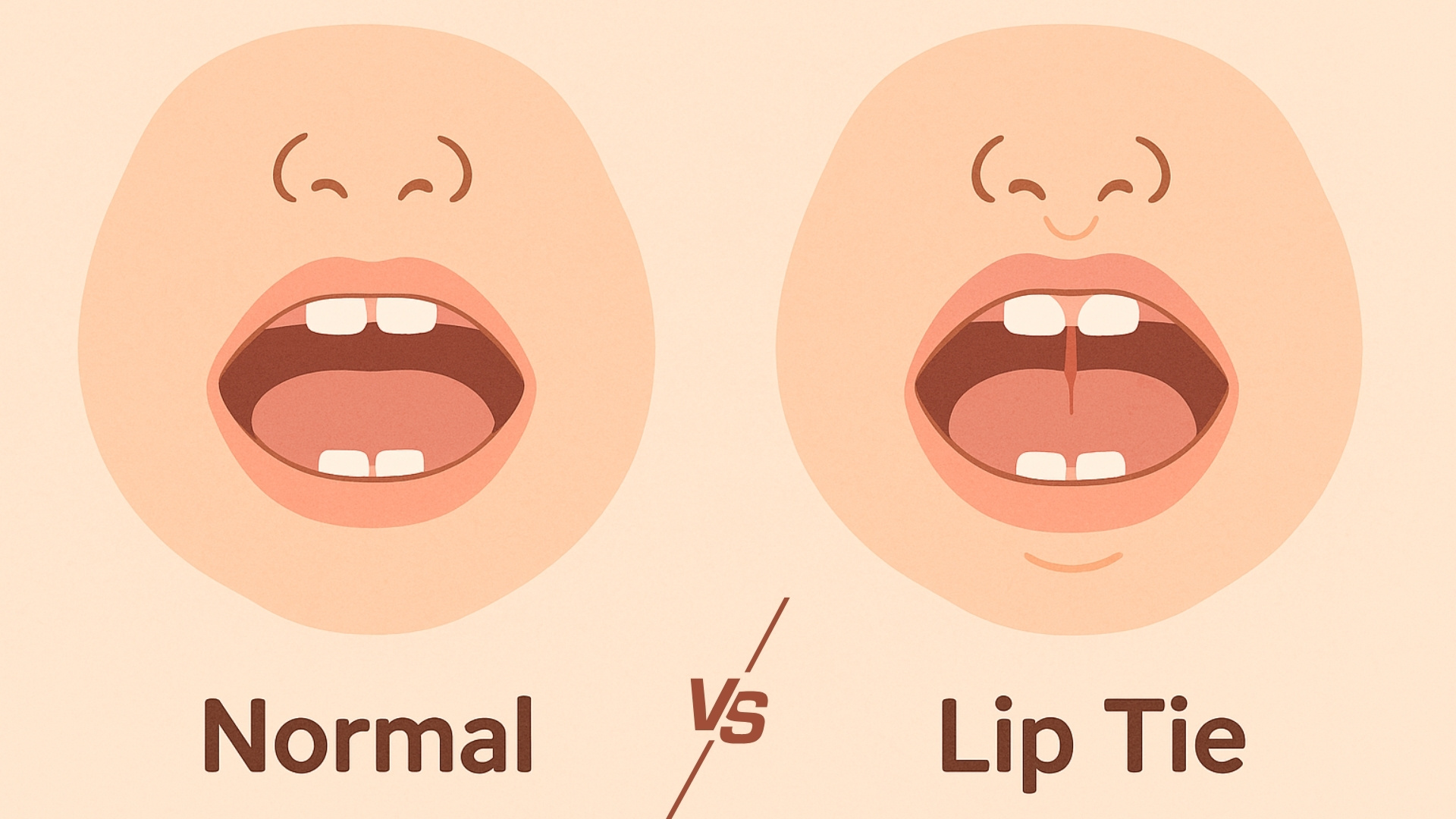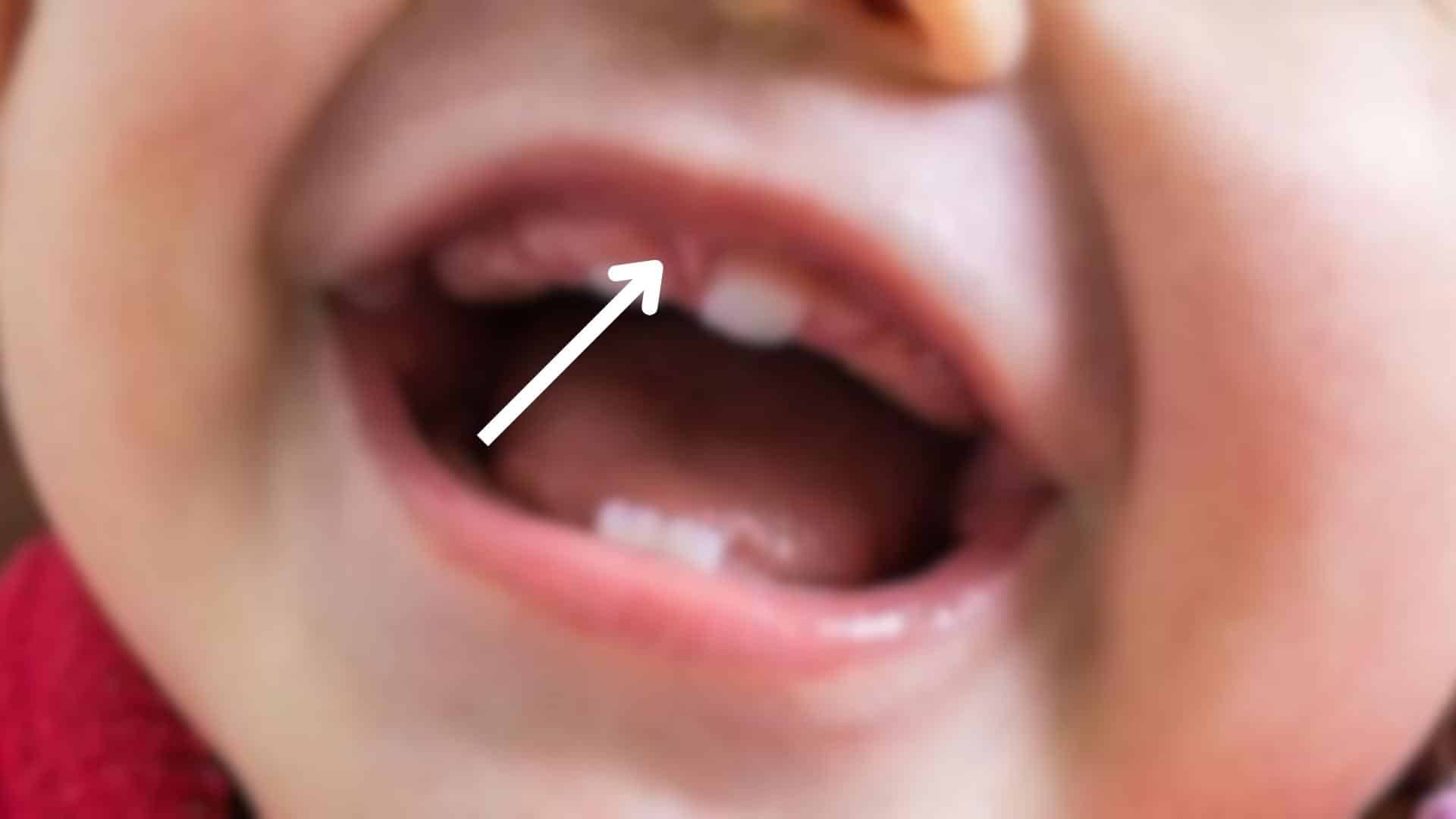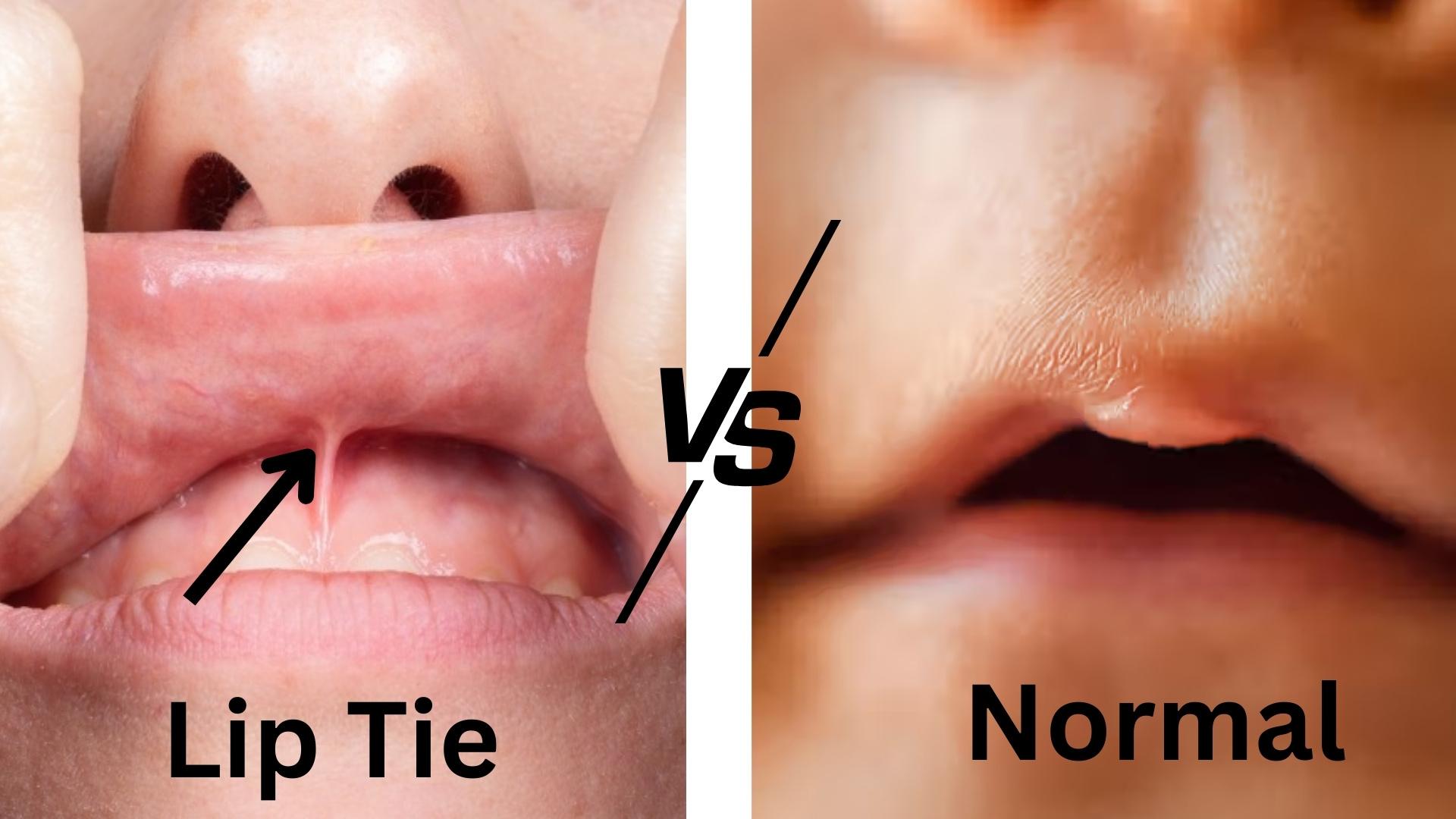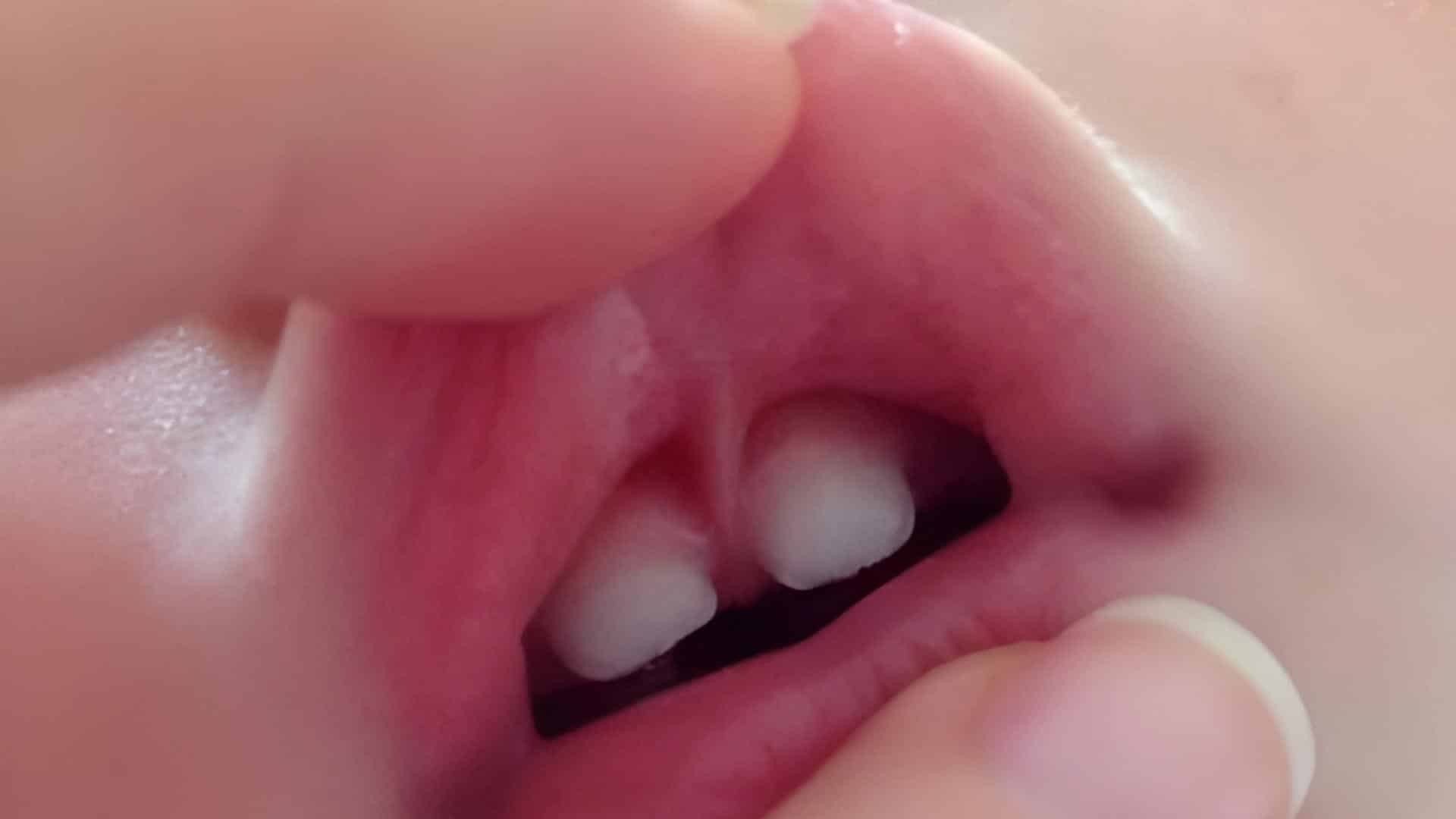
Is your baby still hungry after feeding? Does your little one struggle to latch while breastfeeding? These could be signs of a lip tie.
A lip tie happens when the tissue connecting the upper lip to the gum is too tight or thick. This can make it hard for babies to move their lips properly during feeding.
This guide explains what a lip tie looks like compared to normal lip tissue, whether it will fix itself as your baby grows, and when you might need to see a specialist.
Many parents worry about lip ties, but understanding the difference can help you know when to seek help.
Keep reading to learn more about lip ties and how you can keep your baby healthy.
Note: This blog may contain some images which are mainly for informational purposes only. Viewer discretion is advised.
What is a Lip Tie?
A lip tie is a condition where a piece of tissue under the upper lip is too tight or thick. This tissue is called the labial frenulum. It connects the upper lip to the gums above the front teeth.
A lip tie looks like a band of tissue that pulls the middle of the upper lip down toward the gums. In mild cases, it might be thin and stretchy. In more serious cases, it appears as a thick, tight band that restricts movement of the upper lip.
Sometimes, the lip tie can cause a gap between the two front teeth.
The upper lip may look like it’s “tied down” or doesn’t move freely when the baby smiles or cries. The lip might also curl inward or appear heart-shaped when pulled up.
Why Does Lip Tie Happen In Babies?

A lip tie occurs during early fetal development when the tissue that connects the upper lip to the gum doesn’t separate properly.
Key causes of lip tie in babies include:
- Genetic factors that run in families
- Abnormal tissue formation during fetal development
- Mutations in certain genes that control facial development
- Environmental factors during pregnancy
- Hereditary conditions that affect connective tissue
- Problems with cell migration during embryonic development
- Association with other oral conditions like tongue tie
Signs Your Baby Might Have a Lip Tie
Recognizing the signs of a lip tie early can help you get proper treatment for your baby. Watch for these common symptoms:
- Difficulty latching during breastfeeding
- Making clicking sounds while feeding
- Poor weight gain despite frequent feeding
- Gassiness and fussiness after feeding
You can check for a lip tie by gently lifting your baby’s upper lip to see if there’s a tight band of tissue connecting it to the gum.
However, a proper diagnosis should always come from a healthcare provider like a pediatrician, lactation consultant, or pediatric dentist.
Lip Tie vs Normal: Key Differences

A lip tie happens when the tissue connecting a baby’s upper lip to the gum is too tight or thick.
While normal babies have a thin, flexible piece of tissue that allows the upper lip to move freely, babies with lip ties cannot move their lips as well.
Lip ties can make it hard for babies to latch properly during feeding, which might cause poor weight gain and nursing pain for the mother.
Here’s a key breakdown between Lip Tie and Normal Lip with signs you should look for:
| SIGNS TO LOOK FOR | LIP TIE | NORMAL LIP |
| Frenulum (lip tissue) | Very thick or tight | Thin and flexible |
| Lip movement | Hard to lift upper lip | Lip moves easily |
| Feeding | Trouble latching or breastfeeding | Feeds well without problems |
| Gap in front teeth | Big gap may be seen later | Small or no gap |
| Pain during feeding (for mom) | Mom may feel pain while baby nurses | No pain during breastfeeding |
| Milk leakage | Baby may let milk drip from mouth | Baby keeps milk in mouth while feeding |
| Weight gain | May gain weight slowly | Gains weight normally |
Is Lip Tie Very Serious?

Most lip ties are not serious. Many babies with lip ties feed well and have no problems, and some have minor issues that get better as they grow.
However, some lip ties can cause feeding problems or speech issues later on. In mild cases, no treatment is needed. The tie may stretch on its own as the baby grows.
But in more serious cases, a simple procedure can fix the tie. A doctor performs this, and it takes just a few minutes.
When to Talk to A Doctor?
Talk to your doctor if you notice any of these signs in your baby:
- Problems with breastfeeding or bottle feeding
- Pain during feeding (for mom or baby)
- Trouble gaining weight
- The baby seems hungry all the time
- Clicking sounds while feeding
Getting help early can make feeding easier for both you and your baby.
Treatment Options for Lip Ties

Treatment for lip ties depends on how severe the tie is and what problems it’s causing. Some babies with lip ties don’t need any treatment at all.
For babies who do need treatment, these options are available:
- Frenotomy: A quick procedure where the doctor cuts the tight tissue. It takes just a few minutes and babies can usually feed right after.
- Frenectomy: A complete removal of the tissue. This might be done with scissors, a scalpel, or a laser.
- Wait and see: Some mild lip ties don’t need treatment. The tissue might stretch naturally as the baby grows.
- Therapy: Speech therapy or feeding therapy might help babies who have trouble with speech or eating because of a lip tie.
Talk to your doctor about which option is best for your baby. They will check how the lip tie affects feeding and growth before suggesting treatment.
Final Notes
Now that you know all about lip ties, you have better tools to understand what to look for. Familiarizing yourself with how lips should normally function helps you spot when something might need attention.
Talking to your doctor is an important step if you have concerns about how your baby feeds or seems uncomfortable.
Trust your instincts as a parent. When something seems off with your baby’s feeding or comfort, asking for help is always a good choice. Many babies grow up perfectly healthy with the right care and attention when needed.
Time for a quick peek at those tiny lips!
If you’re interested in more informational content on mothers and babies, feel free toclick here and explore other blogs that you might enjoy.
Frequently Asked Questions (FAQs)
Is a Lip Tie Painful for The Baby?
It doesn’t usually hurt the baby, but it can make feeding harder and tiring.
Will a Lip Tie Go Away on Its Own?
Some mild lip ties improve as the baby grows, but others may need help from a doctor.
What Problems Can a Lip Tie Cause Later?
It may cause speech issues, tooth gaps, or trouble eating certain foods.
Is a Lip Tie the Same as A Tongue Tie?
No, a tongue tie is under the tongue, while a lip tie is under the upper lip.
